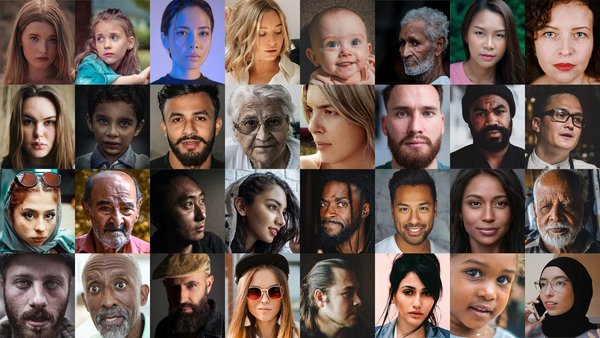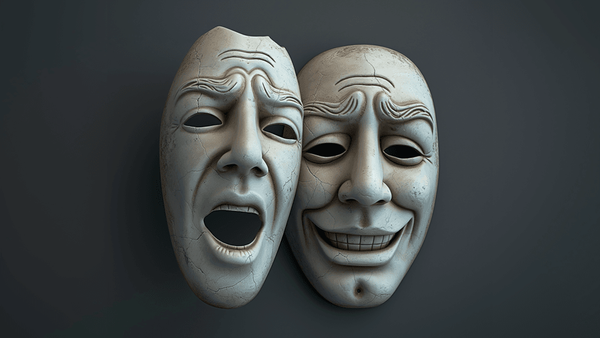The rise of ‘meh-diocrity’ /
An efficiency drive among the entertainment industries is causing culture to stagnate, argues Accenture Song’s global thought leadership lead, Katie Burke. It's time for some lunacy

‘Meh-diocrity’ is a trend we identified in Accenture Song’s Life Trends for 2024 that describes the feeling among audiences that, despite the unlimited plethora of amazing content as a whole, their content diet is uninspiring, unimpressive, and underwhelming. But why? What’s gone wrong?
We are witnessing a growing efficiency culture in the entertainment industries, which is bringing about a stagnation in creative cultural products. When cheap-to-produce, easy-to-binge reality shows take precedence over well-crafted prestige TV, a disconcerting shift becomes apparent. The economy plays a pivotal role, with creative investment experiencing a decline, despite the knowledge that within our industry, investing in brand and creativity often leads to post-recession growth. However, monetary concerns are not the sole issue at play here. Averse attitudes toward creative risk and an unwavering belief in the formulaic strategies of the past are increasingly shaping our pop culture landscape.
Film studios perpetually churn out sequels and expand franchises in pursuit of another blockbuster hit, however with a staggering 135 film sequel projects in consideration for next year, why do I feel exhausted instead of excited about that? I want to escape in a new story with new characters and new emotions. The balance between novelty and familiarity are out of whack and that is evidenced by the fact that 80% of the 25 highest grossing films were sequels, spinoffs or remakes in 2019.
Katie Burke, Accenture
It’s not just film, there is more music than ever available to us, but new music discovered in social media trends is just that — a trend. Here and there new artists find longevity, but the majority are fleeting. In 2022, a staggering 70% of music streaming consisted of songs more than 18 months old. Old music exposed to new generations is great and fun, but new music’s inability to stick makes us question whether technology and the platforms that have replaced the human tastemakers have frozen us in the past.
Creativity in the context of pop culture is all about the dance of meaning between creator and audience. But modern creativity is now largely known as (digital) ‘content’, and platforms filter the inexhaustible volume of content based on what they know of our digital behaviours, which can be a good thing, but it also limits our exploration. Turns out Big Brother is a simulacrum of you, with a limited appetite for serendipity.
When predictability is the name of the game, templates get the job done faster. Templates for apps, templates for content, and templates for platforms are a shortcut to formulaic output. However, the result is that everything looks the same. In our Accenture Life Trends 2024 survey, we learned that 35% of respondents find app designs indistinguishable across brands, a sentiment that reached nearly 40% among 18 to 24-year-olds. In other words, no matter how amazing we think our output is, it is still in the same square box as a picture of someone’s dog.
Generative AI is a mediocrity watch-item for those with creative responsibility. It is a tool for creatives, but not a replacement for creative talent. Generative AI is enabling the masses, most without professional training, to produce content at speed and in bulk. Ultimately, this dilutes quality and raises the bar for the mediocre. How do brands break through and create the different and the original again? Ironically, you have to hope that this will come from expert creatives and designers who have immersed themselves in a more manual tradition of craft and can use gen AI to push boundaries like never before.
We are in the middle of a major digital evolution — perhaps the most consequential yet — and in response, we’re having to redefine our creative mission. It is a mindset shift and a rebellion against today’s status quo. We need to make decisions around what we stand for, where and how we use these new tools and what creativity means today. We need to have these conversations now while we still have control. We need budgets for lunacy.
Creating emotional connections with audiences requires a concerted effort. Purpose makes us feel good, but if everyone is talking about it, how are you different? A lot of award-winning work produced over the past few years has centred on driving purpose, yet according to our survey, 37% of respondents struggle to distinguish brands from each other when it comes to brand messaging on sustainability or significant global events, and 35% say brand content on social media is indistinguishable.
I’m not saying away with purpose. But the broader impact agenda is constrained already by its own cliches. Where’s the fun in marketing? Where’s the creativity? If we have to see another seedling growing out of a child’s hand, we might throw up our oat milk. Sustainability especially cries out for its own radical sense of aesthetics to match its urgency.
I believe that parts of the punk ethos will return to the creative fields. Creatives will write new rules and an attitude of non-conformity will drive differentiation. It will be a sharp right turn from the echo chamber of purpose, the templates we are told to use, the rules of the algorithm. There is a special space where creativity can thrive for brands if we allow it to breathe a little bit more than it does now, and that is where we will see inventiveness happen.
Want more of the same? /
We don’t just write about best-in-class campaigns, interviews and trends. Our Members also receive access to briefings, online training, webinars, live events and much more.







